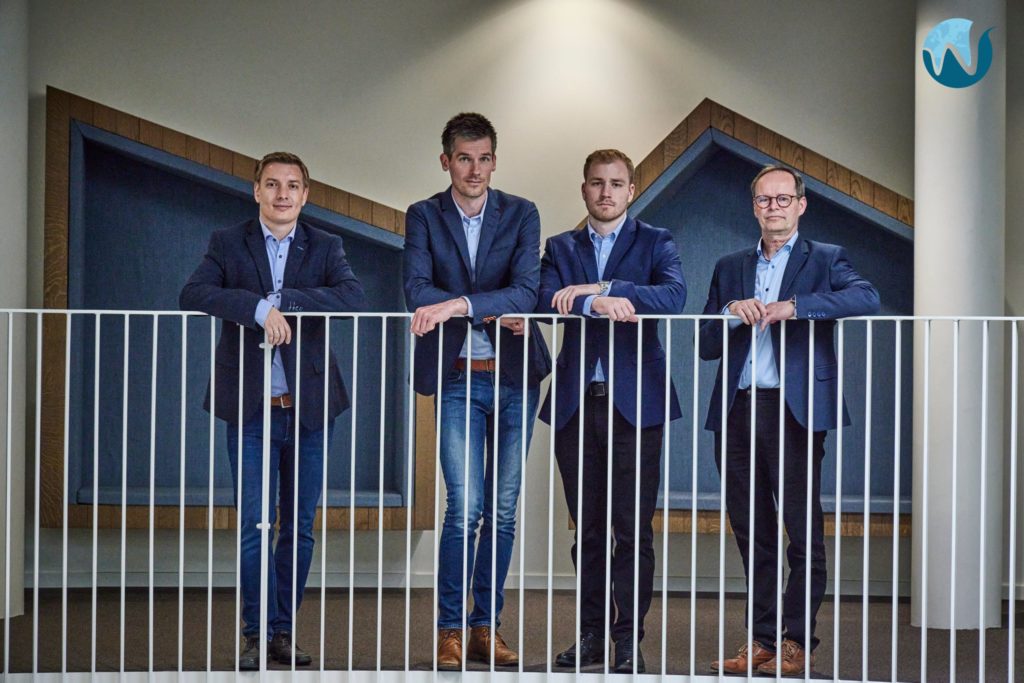New Horizons: Part 1
The WaterWEbTools Story
By Beverley Ferrara, European Representative
 The Water Council is currently working with several start-ups around the globe who are making an impression by pursuing growth opportunities beyond their current geographies, identifying regions beyond their own, where their solutions can make a meaningful difference.
The Water Council is currently working with several start-ups around the globe who are making an impression by pursuing growth opportunities beyond their current geographies, identifying regions beyond their own, where their solutions can make a meaningful difference.
I talked with leaders of two of these organizations recently about the challenges and opportunities associated with new market expansion. One is based in Europe and exploring growth in the U.S. The other, based in the U.S. and exploring growth in Europe.
In this blog, we share insights and experiences from the first, a fascinating company in Denmark that is on the forefront of water management intelligence, solving problems with automation, data and analysis. In the next blog, we’ll share insights from the leaders of an energetic start-up that is developing new ways to alleviate the challenges caused by sewer overflows.
First up, I spoke with CEO Dennis Trolle about the processes WaterWebTools undertakes for evaluating new markets, their focus going forward into the future and how water hubs and organisations can add the most value to their efforts.
What is WaterWebTools?
WaterWebTools is a Danish SaaS company specializing in hydrological and water quality forecasting. Its ASAP solutions help water managers make valuable decisions relating to water supply, flood protection, environmental sustainability, recreation and smart agriculture. The founding team members stem from Aarhus University, where they are recognized as some of the foremost hydrological and water quality forecasting researchers in the world.
How does your solution address challenges and provide tangible benefits in the water sector?

We address the three overarching challenges in water: flooding, drought and water quality. That’s what I’ve been working on for almost 20 years, first as a PhD student and now as a professor and business owner.
A lot of the models originally developed were quite difficult and cumbersome to run. The idea behind WaterWebTools is to extract the greatest value from the most advanced science-based models in the world and make them accessible to non-experts in an intuitive platform.
How did you start, and then grow, in the smart water management space?
The Danish minister for Science & Education created a new funding body called “InnoExplorer” to help move solutions out of the university and into society – and that idea fit perfectly with our ambitions. We applied as a group and won the award, which provided the capital to build a partnership blending environmental engineering, hydrology, modeling and software development. From there, we started to work on EU funded projects and helped create a digital twin of Europe’s largest saltwater lagoon and its entire watershed in the SmartLagoon project in Spain, for example.
How do most people react to the value of your offerings? Any surprises?
The value of data is coming into its own as water challenges become more pressing, but the industry is still quite conservative and risk averse. So, to change the way operators think and deal with data, we spend a lot of time communicating with clients, understanding their challenges and demonstrating how best to use our solutions on a daily basis.
What they like is that we’ve made something very easy that was previously very difficult. So, it’s generally welcomed, but working in new ways can be a difficult process.
For example, our software enables different sectors to work together, like river keepers and reservoir managers. Now they have a common platform allowing teams to communicate and understand how things are connected, instead of only looking at data from their own silo. I’ve seen how integrating teams drives real change and improvements in the community.
What is your process for evaluating and deciding to purse a new market and what challenges you as a small company?
We realize we’re too small to have that overview ourselves so we lean on market intelligence from organisations like The Water Tech Alliance, a Danish trade body that facilitates knowledge-sharing between the North American and Danish water sectors.
We have also solidified a partnership with Cimbria Consulting and are working closely to begin our transatlantic market integration into the U.S. Access to The Water Council’s network is also very valuable. Having warm introductions to utilities and consulting firms helps us become known and trusted in the ecosystem.
What are the most important things you need to focus on to continue growing?
Paying contracts! I am leaving academia in early 2023 to focus solely on the company. I think it’s important to honor its mission and devote time to make it a success. In the U.S. we currently have a reference project in Texas, which will help strengthen our value proposition before going more intentionally to the larger market.
We’re also exploring growth via a partnership scenario where certain consultancy firms would apply the model and onboard clients, which can take anywhere from two to six months. Then we can provide access to the software forecasting on a daily basis. In principle, we could solve issues in Texas from Denmark.
We have the world’s best expertise, so to maintain this brand, we prefer to grow more slowly and partner with the best experts or have people trained in our company that can do the onboarding. That’s a critical piece.
In the end what drives you? What gets you up in the morning?
The key motivation is to make a positive difference in people’s lives and advance the value of digital, smart and accessible tools to understand and manage our water resources, and we truly believe we have a solution that can do just that.
